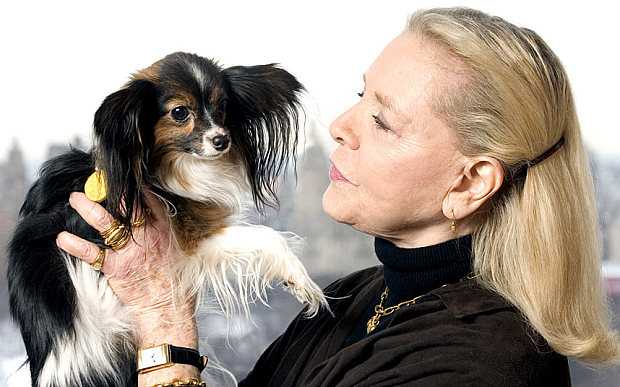Differences between novel and screenplay
Adaptation of novel to film
Film scholar Greg Jenkins has done a detailed analysis of the adaptation of the novel as a screenplay. The novel is in three parts. The film greatly expands the relatively brief section in Part I, about the boot camp on Parris Island, and essentially discards Part III. This gives the film a twofold structure, telling two largely independent stories connected by the same characters acting in each. Jenkins believes this structure is a development of concepts that Kubrick has had since the 1960s. At that time, Kubrick talked about wanting to explode the usual conventions of narrative structure.
Sergeant Hartman (renamed from the book’s Gerheim) has an expanded role in the film. In the film, Private Pyle’s incompetence is presented as weighing negatively on the rest of the platoon and in the film, unlike the novel, he is the only under-performing recruit. The film omits «Hartman’s» disclosure to other troops that he thinks Pyle might be mentally unstable, a «Section 8». In contrast, Hartman praises Pyle, saying that he is «born again hard». Jenkins says that the character of Hartman could not have been portrayed as having a warmer social relationship with the troops, as that would have upset the balance of the film, which depends on the spectacle of ordinary soldiers coming to grips with Hartman as a force of nature embodying a killer culture.
Various episodes in the book have been cut from the screenplay or conflated with others. For example, Cowboy’s introduction of the «Lusthog Squad» has been both markedly shortened and supplemented by material from other sections of the book. Although the book’s final, third section was largely dropped, elements from this section were inserted into other episodes of the film. For instance, the climactic episode with the sniper is a conflation of two episodes in the book, from Parts II and III. Jenkins thinks the film presents this passage more dramatically but in less gruesome detail than in the novel.
The film often has a more tragic tone than the book, which relies on callous humor. Joker in the film remains a model of humane thinking, as evidenced by his moral struggle in the sniper episode and elsewhere. He works to overcome his own meekness, rather than to compete with other Marines. The film omits the book’s showing his eventual domination over Animal Mother.
The film also omits the death of the character Rafterman. Jenkins believed this allowed viewers to reflect on Rafterman’s personal growth in the film and speculate on his future growth after the war. Jenkins also believed Rafterman’s death would not have fit the plot of the screenplay.
Music
Kubrick’s daughter Vivian Kubrick, under the alias «Abigail Mead», wrote the film’s score. According to an interview, which appeared in the January 1988 issue of Keyboard, the film was scored mostly with a Fairlight CMI synthesizer (the then-current Series III edition) and a Synclavier. For the period music, Kubrick went through Billboard‘s list of Top 100 Hits for each year from 1962 to 1968 and tried many songs, but «sometimes the dynamic range of the music was too great, and we couldn’t work in dialogue».
- Johnnie Wright – «Hello Vietnam»
- The Dixie Cups – «Chapel of Love»
- Sam the Sham & The Pharaohs – «Wooly Bully»
- Chris Kenner – «I Like It Like That»
- Nancy Sinatra – «These Boots Are Made for Walkin'»
- The Trashmen – «Surfin’ Bird»
- Goldman Band – «Marines’ Hymn»
- The Rolling Stones – «Paint It Black»
A single «Full Metal Jacket (I Wanna Be Your Drill Instructor)», credited to Mead and Nigel Goulding, was released to promote the film. It incorporates Ermey’s drill cadences from the film. The single reached number two in the UK pop charts.
Папильоны в истории
Французский король Генрих III души не чаял в папильонах. У него жила целая свора этих собак, и он не скупился в расходах на их содержание. Зачастую король являлся на заседания государственного совета с корзинкой, в которой восседало несколько его любимцев. Это, разумеется, не могло не вызвать недовольство придворных, особенно учитывая то, что время было тяжелое. Францию раздирали религиозные войны между протестантами и католиками, которых поддерживал король.
1 августа 1589 г. Генрих ночевал в местечке Сен-Кло в армейском лагере. Королевское войско готовилось к штурму взбунтовавшегося Парижа. Перед сном аудиенцию у короля попросил монах Жан Клемен. Но Лилин, любимая питомица короля, внезапно прониклась к посетителю неприязнью. Она захлебывалась лаем и наотрез отказывалась подпускать визитера к хозяину. Монарх приказал вынести Лилин из комнаты. Это стало роковой ошибкой.
Монах внезапно выхватил кинжал и вонзил в живот Генриху. Смерть не была милостивой к королю – он промучился несколько дней. Видимо, умирая, он горько раскаивался в том, что не доверился интуиции преданнейшего из своих друзей.
***
Папильон, принадлежавший Марии-Антуанетте, проводил свою хозяйку на плаху. Королева, уже поднявшись на гильотину, успела передать любимицу помощнику палача. После казни Марии-Антуанетты собачку приютила семья, которая жила в здании, получившем впоследствии название «Дом Папильон». Имеется множество скульптур и изображений королевских любимцев, созданы они из полудрагоценных и драгоценных камней.
Знаменитые владельцы папильонов
Кристина Агилера держит двух папильонов: Чуи и Стинки.
Четвероногий друг Александра Барыкина – папильон Этьен.
Гитарист группы “All Time Low” Алекс Гаскарт ценит преданность любимца Себастьяна.
Австралийская художница-самоучка Элиза Лихи рисует фантастические картины, изображающие животных. И души не чает в папильоне по имени Джем. Джем, кстати, участвует в программе Psychiatric Service Dog, то есть в качестве собаки-терапевта навещает пациентов госпиталей, оказывая им психологическую помощь. Сама Элиза не выходит из дому без преданного четвероногого друга.
Еще одна счастливая владелица папильона – американская актриса Алисия Ризер. Ее питомца зовут Гэтсби – в честь книги Ф. Скотта Фицджеральда.
Папильон Коко живет в доме американского писателя и радиоведущего Нила Буртса.
Голливудская звезда Лорен Баколл обожает своего папильона Софи и называет любимицу не иначе как «Мой партнер». «Софи очень милая и умная, — признается актриса, — и никто из людей не способен на такую любовь, которую она мне дарит».
 На фото: Лорен Баколл и ее папильон Софи
На фото: Лорен Баколл и ее папильон Софи
Themes
Helmet prop from the film
Compared to Kubrick’s other works, the themes of Full Metal Jacket have received little attention from critics and reviewers. Michael Pursell’s essay «Full Metal Jacket: The Unravelling of Patriarchy» (1988) was an early, in-depth consideration of the film’s two-part structure and its criticism of masculinity, arguing that the film shows «war and pornography as facets of the same system».
Most reviews have focused on military brainwashing themes in the boot camp training section of the film, while seeing the latter half of the film as more confusing and disjointed in content. Rita Kempley of The Washington Post wrote, «it’s as if they borrowed bits of every war movie to make this eclectic finale.» Roger Ebert said, «The movie disintegrates into a series of self-contained set pieces, none of them quite satisfying.» Julian Rice, in his book Kubrick’s Hope (2008), sees the second part of the film as continuing the psychic journey of Joker in trying to come to grips with human evil.
Tony Lucia, in his July 5, 1987, review of Full Metal Jacket for the Reading Eagle, looked at the themes of Kubrick’s career, suggesting «the unifying element may be the ordinary man dwarfed by situations too vast and imposing to handle». Lucia specifically refers to the «military mentality» in this film. He said further that the theme covered «a man testing himself against his own limitations», and he concluded: «Full Metal Jacket is the latest chapter in an ongoing movie which is not merely a comment on our time or a time past, but on something that reaches beyond.»
British critic Gilbert Adair wrote: «Kubrick’s approach to language has always been reductive and uncompromisingly deterministic in nature. He appears to view it as the exclusive product of environmental conditioning, only very marginally influenced by concepts of subjectivity and interiority, by all the whims, shades and modulations of personal expression».
Michael Herr wrote of his work on the screenplay: «The substance was single-minded, the old and always serious problem of how you put into a film or a book the living, behaving presence of what Jung called The Shadow, the most accessible of archetypes, and the easiest to experience … War is the ultimate field of Shadow-activity, where all of its other activities lead you. As they expressed it in Vietnam, ‘Yea, though I walk through the Valley of the Shadow of Death, I will fear no Evil, for I am the Evil’.»
In a 2009 review, Dan Schneider alleged that Kubrick took the cinematic idea of a recruit being broken down in boot camp and driven to suicide from the epic film series The Human Condition (1959–1961).
Cast
- Matthew Modine as Private/Sergeant J. T. «Joker» Davis, a wise-cracking young recruit. Modine kept a diary on set, which was later adapted into a book in 2005 and eventually an interactive app in 2013.
- Vincent D’Onofrio as Private Leonard «Gomer Pyle» Lawrence, an overweight and slow-minded recruit who is the subject of Hartman’s mockery. D’Onofrio heard of the auditions for the film from Modine. Using a rented video camera and dressed in army fatigues, D’Onofrio recorded his audition. Despite Kubrick’s saying that Pyle was «the hardest part to cast in the whole movie», he quickly responded to D’Onofrio, telling the actor that he had won the part. D’Onofrio was required to gain 70 pounds (32 kg).
- Lee Ermey as Gunnery Sergeant Hartman, a harsh and vulgar Parris Island drill instructor. Ermey served as a U.S. Marine drill instructor during the Vietnam War and used this experience to ad lib much of his dialogue.
- Adam Baldwin as Animal Mother, a combat-hungry machine gunner who takes pride in killing enemy soldiers. Arnold Schwarzenegger was first considered for the role, but he turned it down in favor of The Running Man.
- Arliss Howard as Private/Sergeant Cowboy, member of the Lusthog Squad and friend of Joker.
- Kevyn Major Howard as Rafterman, combat photographer.
- Dorian Harewood as Eightball, a member of the squad.
- Tim Colceri as Doorgunner, a ruthless helicopter door gunner who suggests that Joker and Rafterman write a story about him. Colceri, a former Marine, was originally slated to play Hartman, a role which ultimately fell to Ermey. Kubrick instead gave him a smaller role as a helicopter door gunner.
Additional characters include: Peter Edmund as Private «Snowball» Brown, one of the Parris Island recruits; Ed O’Ross as Lieutenant Walter J. «Touchdown» Schinoski, the first platoon leader of the Lusthog Squad; John Terry as Lieutenant Lockhart, the editor of Stars and Stripes; Kieron Jecchinis as Crazy Earl, a member and also a former leader of the Lusthog Squad who assumes leadership after Touchdown is killed; Jon Stafford as Doc Jay, head medic of the Lusthog Squad and Bruce Boa as Poge Colonel, the colonel who dresses down Joker for wearing a peace symbol on his lapel.
Ian Tyler plays Lieutenant Cleves, a Marine interviewed by Joker and Rafterman at a Vietnamese murder site; Sal Lopez and Gary Landon Mills appear as T. H. E. Rock and Donlon respectively, two members of the Lusthog Squad; Papillon Soo Soo plays a Da Nang hooker and Ngoc Le appears as the Viet Cong sniper. Stanley Kubrick and his daughter Vivian make uncredited appearances as two photographers at a Vietnam massacre site.





























